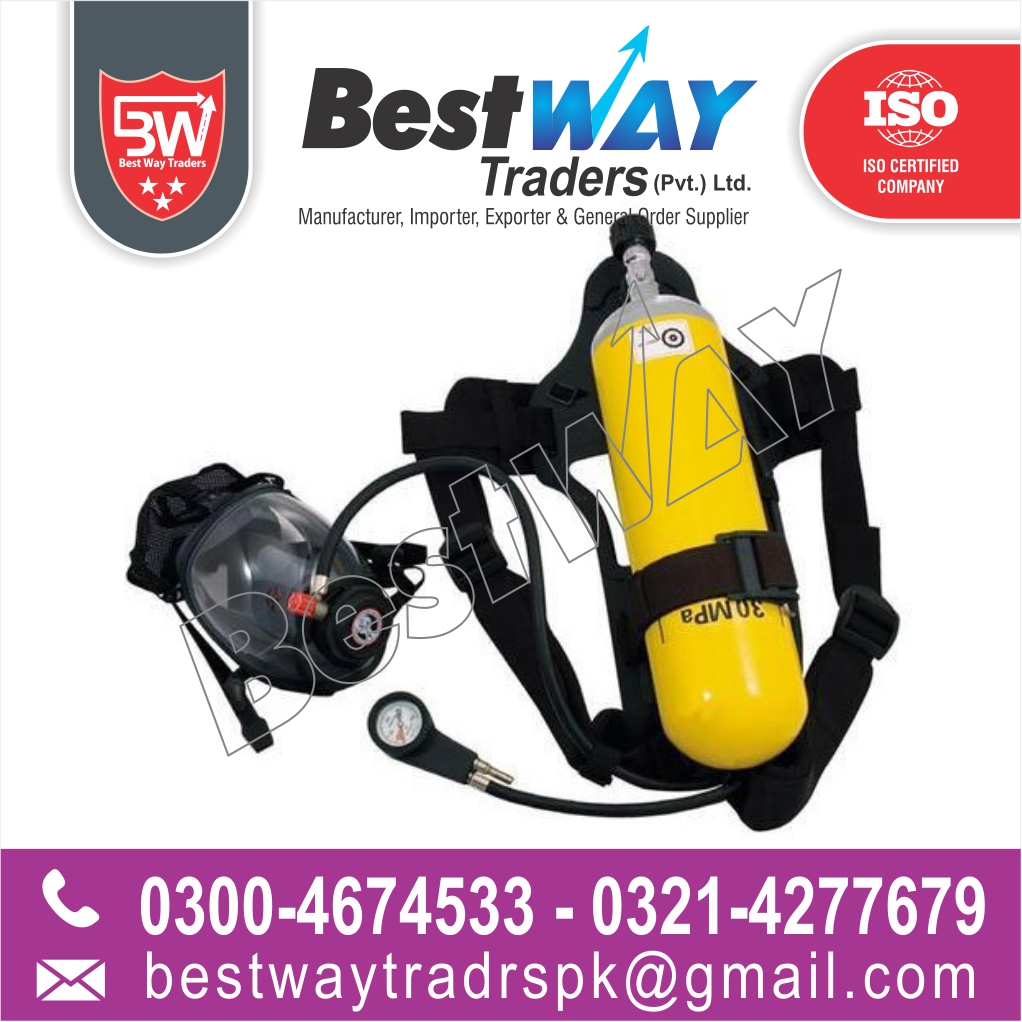
Breathing Apparatus
Therefore, if a well test is to be carried out and H2S is ‘possible’ in the well, sufficient breathing apparatus sets must be made available for all personnel on the rig. This breathing apparatus should be self contained and allow at least 20 minutes usage without refilling air bottles.
For tests where H2S is ‘expected’ a full cascade air system should be installed in preference to the use of air bottles.
The use of breathing apparatus (particularly air bottles) to carry out normal well testing operations in an H2S contaminated environment is more physically taxing to workers. Therefore, regular rotation of test crew working in contaminated areas will be required.
Spare sets of breathing apparatus should always be maintained in a safe area close to the work sites to enable rapid change over in the event of an equipment failure.
Emergency escape air packs found on the rig should only be used for this purpose and not for normal working.
Further information on H2S is contained in section 4.9. However, the advice of a specialist H2S contractor is recommended when planning a sour well test.
Fixed and portable types of breathing apparatus are used. In brief, they contain an oxygen cylinder that is connected via a regulator to the mask. Personnel use them when working in an area that has a possibility of toxic gas release.
Portable breathing apparatus contain the following items:
In many movies (especially war movies) film actors and actresses have been shown wearing a breathing mask. Therefore breathing air apparatus (BA) is a fairly familiar instrument and a photo is not shown.
20.25 Access to Service Reservoir
Access to each reservoir compartment is needed for personnel, plant and materials. Access openings are usually sized to allow entry by a person wearing breathing apparatus. Access openings for plant and materials should be larger. Upstands should be provided around each opening to prevent surface water entering the reservoir. Covers to all openings must be robust but they do not normally need to be designed to support heavy loadings. They must be secure to prevent unauthorized access and must not allow rainwater to enter the reservoir. Lift-off covers risk introduction of mud and debris into the reservoir; therefore hinged covers are preferred but they must have an effective system for holding them in the open position when the access is in use.
For personnel entry into the reservoir the preferred arrangement is an inclined ladder leading to a platform about 2.5 m below the roof and a stairway leading from the platform to the floor. Where a stairway height exceeds 3 m, an intermediate landing is required. Reinforced concrete construction is recommended for platforms and stairways as this needs less long-term maintenance. The platforms can either be supported on columns or, in some cases, cantilevered from the walls. Alternatively the platforms and stairways can be fabricated in galvanized steel or anodized aluminium alloy. The same material should be used for the ladder. Typically two separate human accesses should be provided into each compartment, near opposite corners to assist ventilation of the compartment when work is in progress and to provide an escape route in an emergency.

Access for plant and materials has to be unobstructed to allow items to be lowered vertically to the compartment floor. The clear opening needed for small plant and materials for normal maintenance should be not less than 1.5 m×1.0 m to allow a wheelbarrow to be lowered. Consideration should be given to the provision of removable hand railing around such openings, or of sockets into which it could be fitted. For reservoir compartments exceeding about 10 000 m3 a second and larger access for plant and materials should be considered if larger mechanical equipment might be needed for cleaning or major repairs. It is important to ensure that unauthorized vehicles cannot reach the roof or be used outside any specially strengthened areas of the roof.
